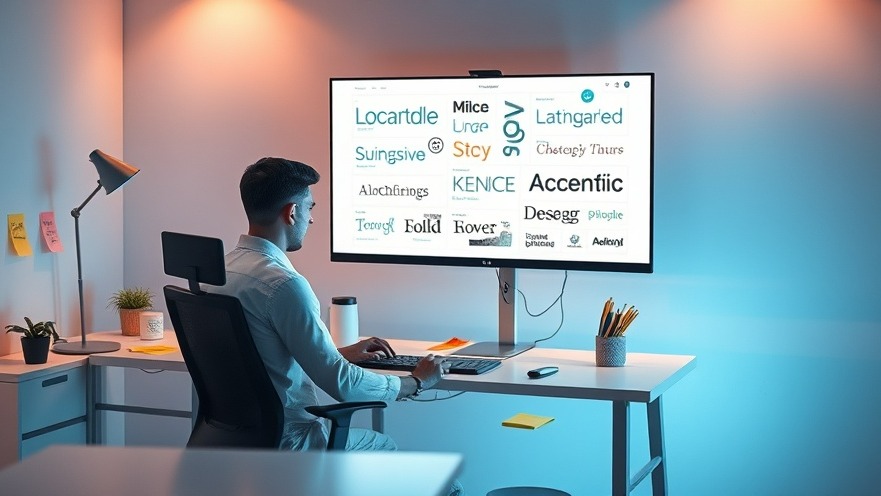
Why Thin Fonts Are a Design Flop
Thin fonts, once celebrated for their sleek and sophisticated appearance, are facing a reckoning in the design community. Many designers are now awakening to the harsh reality that these stylized typefaces can lead to serious usability issues. Just as a glamorous couch may draw admiration but prove uncomfortable, so too do thin fonts strain the eyes and frustrate users, particularly in less-than-ideal viewing conditions.
The Impact on Usability
As recent trends indicate, many brands are starting to abandon ultra-thin typography for more robust and readable options. This shift can largely be attributed to user feedback, as visibility and accessibility have become key factors in user experience design. For instance, tech giants like Apple and Google learned the hard way that aesthetic minimalism doesn’t always translate to real-world usability. Apple’s transition from the delicate fonts of iOS 7 to thicker, more legible typefaces speaks volumes about the need for enhanced clarity in communication with users.
The Death of Aesthetic-Driven Design
What took so long for this change? Design trends are often dictated by a cult of aesthetics that often prioritizes visual appeal over functionality. The rise of minimalism steered brands toward the use of hair-thin strokes in fonts as a representation of modernity, where clean lines overshadow usability. However, as more users—especially those with aging eyes or other vision-related issues—struggle with these ghostly fonts, there is a growing recognition that usability should trump style. Brands that cling to this outdated notion of exclusive design risk alienating their audiences.
Accessibility: A Legal and Moral Imperative
Ignoring the accessibility implications of typography can lead to significant repercussions, both ethically and legally. The Web Content Accessibility Guidelines (WCAG) exist for a reason: to ensure that all users, regardless of ability or age, can access and understand digital content. Legal actions have already been taken against brands that fail to adhere to these standards, emphasizing the importance of readability. The failure to adopt user-friendly typography isn’t just a minor inconvenience; it’s a barrier that could lead to lawsuits.
What This Means for Franchise Brands
For franchisors, taking heed of these design lessons is vital. Ensuring that all branding elements, including typography, are legible and accessible across multiple platforms can significantly enhance brand consistency and franchisee performance. When customers can easily read a menu, a sign, or promotional material, it builds trust and familiarity with the brand. Simplicity in design should not compromise operational efficiency; rather, it should enhance it. Franchisors can lead the charge in adopting design practices that prioritize accessibility while still conveying their brand’s unique identity.
Moving Forward: A Roadmap for Best Practices
As the design landscape evolves, it’s essential for brands to implement best practices that marry aesthetics with usability. Start by conducting user testing with various demographics to gather feedback on font choices. Leverage tools to evaluate color contrast and font size, ensuring alignment with WCAG guidelines. By prioritizing designs that are functional while still retaining a sense of style, brands can foster environments where all users feel included and valued.
Final Thoughts
It's time for designers and brands alike to re-evaluate their commitment to using typography that serves people, not just aesthetics. By embracing change, the industry can move toward a future where legibility and accessibility are the norms. For franchisors focused on optimizing operational efficiency, adopting user-friendly designs could be the key to elevating brand performance across all locations.
For more insights on enhancing your branding strategy, consider ways to integrate usability and accessibility into your franchise operations.
 Add Row
Add Row  Add
Add 




Write A Comment